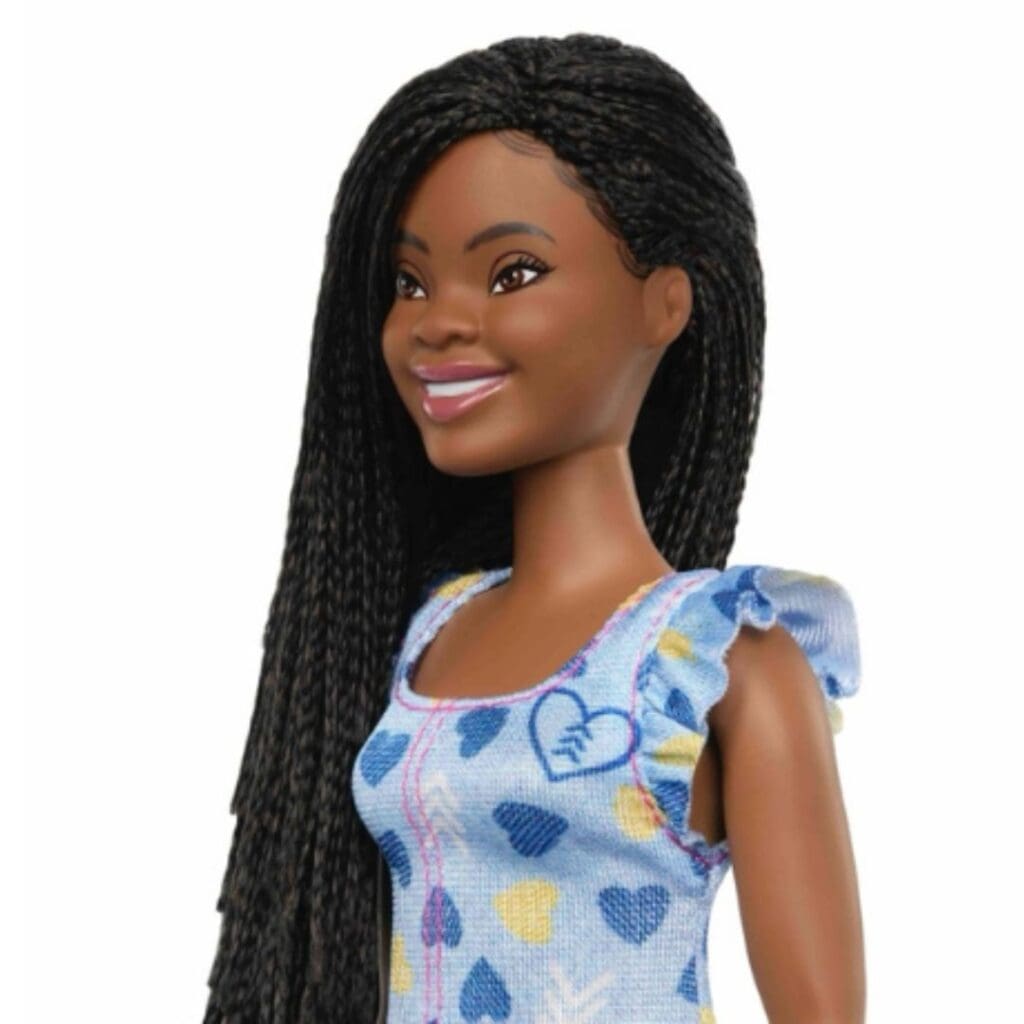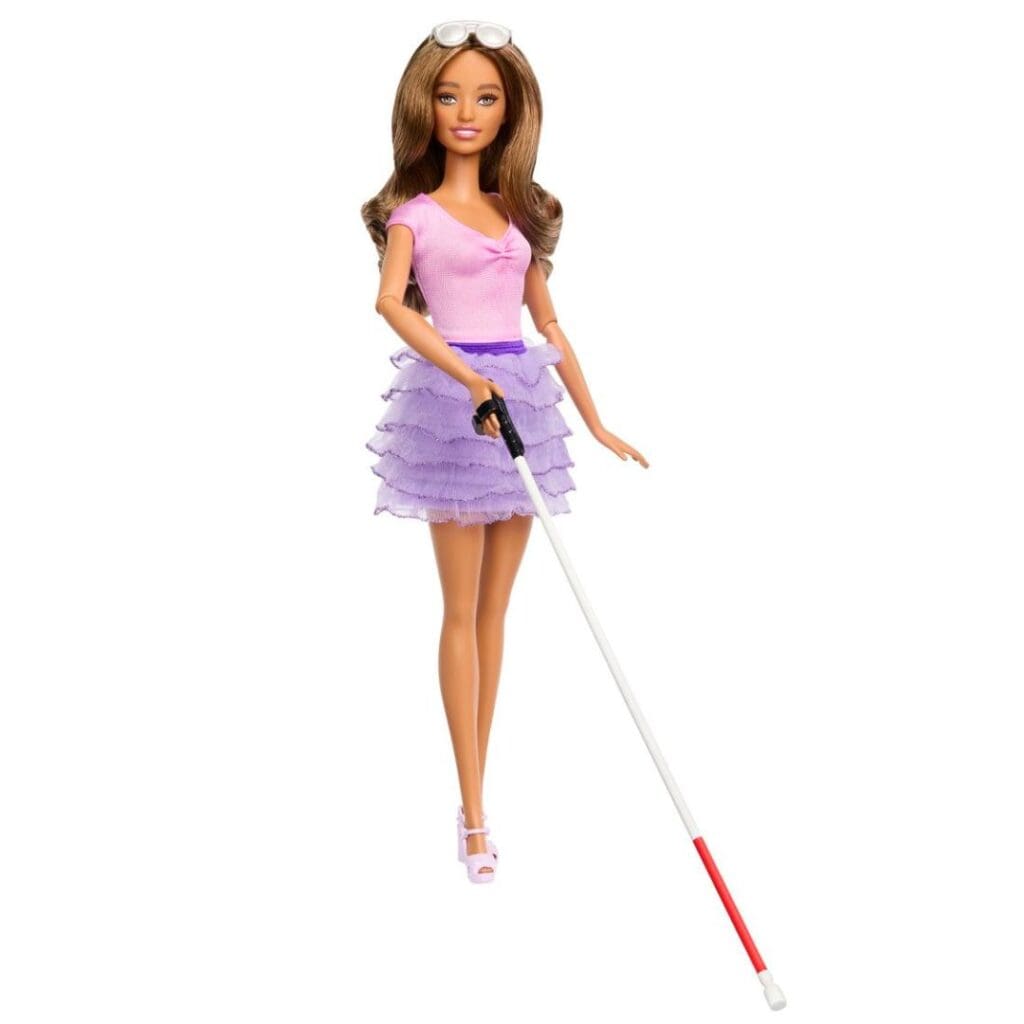

Mattel is expanding its Barbie line to include more diverse dolls, allowing more children to find one that represents them. In fact, recent additions include a Black Barbie doll with Down syndrome and a blind Barbie Fashionista Doll.
In 2023, Barbie made history by launching its first-ever doll with Down syndrome. In fact, this was awarded the Corporate Social Responsibility Initiative of the Year award from the Toy Association. Building on this success, Barbie has again partnered with the National Down Syndrome Society (NDSS) in the USA. This time, they are introducing a new Black Barbie with Down syndrome as part of the 2024 Barbie Fashionistas lineup.
Mattel worked closely with NDSS from the initial concept to the final design. They worked diligently to ensure the Black Barbie doll with Down syndrome authentically represented the community. In fact, NDSS even organised a focus group of Black individuals with Down syndrome to give feedback on the doll’s sculpt, hairstyle, fashion and glasses. The doll’s outfit and accessories also incorporate symbols and colours associated with Down syndrome awareness.
Down Syndrome South Africa has also celebrated the introduction of a Black Barbie Fashionista Doll with Down Syndrome. This non-profit organisation is committed to improving the quality of life of all persons with Down syndrome.
Elaine Passmoor, National Executive Director at Down Syndrome South Africa commented: “As an organisation working with persons with Down syndrome and their families, DSSA is excited to hear of the launch of a second Barbie Doll with Down syndrome. The Barbie Fashionista range continues to show inclusivity and representation of persons with disabilities. The inclusion of a Black Barbie doll with Down syndrome is empowering and a significant step towards a more inclusive world where everyone’s uniqueness is celebrated.”
Mattel also expanded its inclusive Barbie line by introducing a blind Barbie doll. However, this time they collaborated with the American Foundation for the Blind (AFB). Together they ensured that every detail of the doll accurately represented the experiences of individuals with blindness or low vision.
Mattel tested the doll with blind and low-vision children to make sure it offered an accessible and enjoyable play experience. The doll comes equipped with a white cane, stylish sunglasses and a textured outfit designed for tactile engagement. The result is a thoughtful and accessible toy for all children.
Eric Bridges, CEO and President of American Foundation for the Blind, praised the collaboration, saying: “By increasing representation and promoting awareness about the experiences of blind individuals, we aim to inspire boundless opportunities for everyone, ultimately leading to a world of greater accessibility and inclusion.”
The introduction of this Barbie was warmly welcomed by the South African Guide-Dogs Association for the Blind. This organisation helps visually and physically impaired individuals achieve independence through mobility training and skill development.

To celebrate the launch of these new Barbie dolls, Mattel collaborated with Aille Design, an accessible fashion brand. Together, they created a Barbie-inspired collection featuring pieces with braille beadwork. The collection includes a slip dress, a black neck scarf and a classic t-shirt in Barbie’s signature pink. Furthermore, each item is adorned with braille text made from Swarovski crystal pearls.
Mattel’s commitment to inclusivity shines through the Barbie Fashionistas line, now featuring over 175 different looks. This diversity continues to set a powerful example. Moreover, doll play has been shown to develop empathy and social processing skills in children. By offering a multi-dimensional view of beauty and fashion, these dolls help children from all backgrounds and abilities see themselves in the toys they play with. As a result, this helps foster a world where everyone’s story is valued.
Stay up-to-date on the hottest, hippest and most happening things to do in Mzansi!
